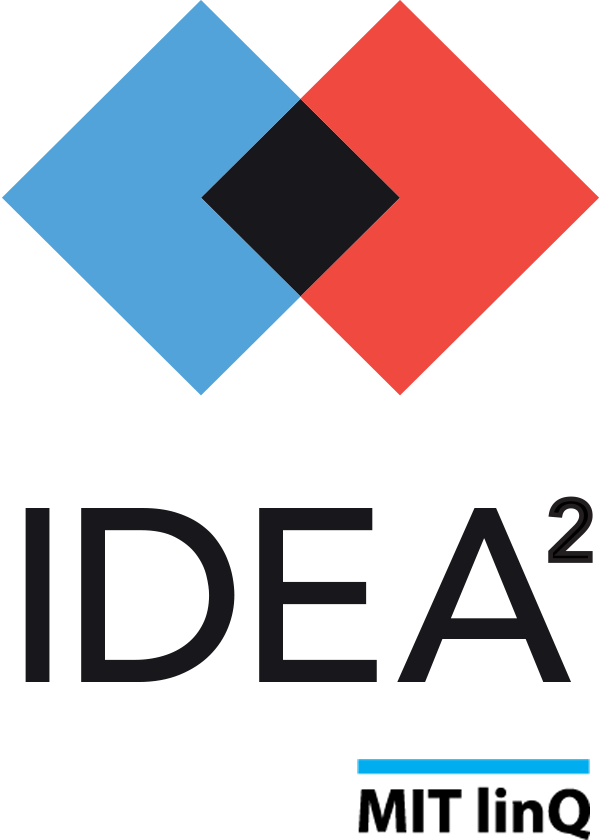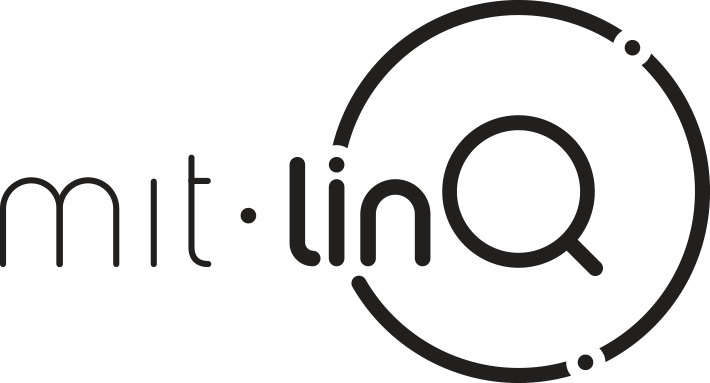
The 2021 cohort of teams emerged from the COVID-19 pandemic with technology innovation projects that focus on historically underserved communities and women’s health. Read the news announcement introducing the teams.
2021 Teams
3D Spinal Implants
Patients with Spinal Cord Injury (SCI) suffer from permanent loss of motor, sensory and autonomic functions. There is currently no effective treatment that can regenerate the injured spinal cord and that restore those functions and unfortunately this condition has a huge economic, social and medical burden. Matricelf is developing a complete autologous (personal) 3D neural implant that showed promising pre-clinical results by restoring motor functions in mice. The condition can be classified as a regenerative medicine advanced therapy (RMAT) by the FDA and therefore enable the company to start a first in human clinical trial in 2024.
Team lead: Asaf Toker
AqueousJoint (Liposphere)
For osteoarthritis patients with chronic knee pain it’s a challenge to maintain an active, pain-free life-style. Today, their best options are regular local injections of hyaluronic acid or corticosteroids which, because of poor long-term effectiveness yields continuing pain, frequent visits to the doctor with painful injections. Thus, there is a need to extend the effectivity of the injectables to treat OA patients which, if solved, reduces the time and cost away from work. (Work absences due to osteoarthritis cost U.S. employers more than $10 billion per year). Solving this need can be achieved by the use of our long lasting, patented biolubricant AqueousJoint that will restore the natural lubrication properties of cartilage and will be demonstrated/proven by the cost and time away from work with chronic knee pain.
Team lead: Sabrina Jahn
BiliFit
For parents of neonates at risk of jaundice, it’s a challenge to safely monitor their baby at home. Today their best option is to keep/put the baby in NICU, which because of hospital costs, overcrowding and separation of parents from infants yields financial and emotional stress and potential worse clinical outcomes (like infections or staggered development. Thus, there is a need to monitor neonatal jaundice safely, affordably, and effectively at home, which, if solved, would have the impact of reduced average cost of care for parents and improved clinical outcomes for neonates. Solving this need can be achieved by a wearable band and app that monitor bilirubin levels and aid parents and doctors better manage neonate’s health. It will be demonstrated by a reduction in incubators usage and an increase in accuracy with which complications are identified as opposed to visual inspection by parents.
Team lead: Ratika Agarwal
Fast T4 care thyroid
For pregnant women it’s a challenge to know if they have low levels of T4. Today, their best option is a laboratory exam which, can be time consuming, invasive for the patient, and requires trained personnel to perform the diagnostic test. Thus, women do not have their T4 levels tested frequently enough. There is a need for early and frequent detection of T4 levels which, if solved, could prevent cognitive damage to the fetus. This need can be solved by the application of an at-home, laminar flow test for immediate detection of low T4 levels in a urine sample and will be demonstrated by increased detection of hypothyroidism during pregnancy.
Team lead: María Cecilia Opazo
Genesis
For African-American pregnant mothers at-risk for preeclampsia, it’s a challenge to adequately notice, manage, and/or receive a pre-eclampsia diagnosis. Today, their best option is living with undiagnosed preeclampsia or premature childbirth, which, increases the likelihood of the dangers associated with preterm birth & preeclampsia [primary functional problem relating to activity] and yields more maternal & infant complications and mortalities. Thus, there is a need for a consumer-driven platform to managing pre-eclampsia which would have the impact of decreasing the maternal mortality rate for African-American mothers by at least 66%; ultimately eliminating the outlier & racial disparity seen in preeclampsia cases. Solving this need can be achieved by providing an environment to assist with noticing, managing, and diagnosing pre-eclampsia in earlier stages and will be demonstrated/proven by a lower maternal mortality rate and fewer premature births for African-American pregnant mothers.
Team lead: Latrice Jones
INIA Biosciences
Up to 30% of the 20,000 patients that will receive a new kidney transplant will reject it. it’s a challenge to sufficiently prevent rejection. Today, their best option is multiple immunosuppressant drugs for life, which, because of the need to balance the side-effects with the drug’s efficacy means it does not always work and yields in rejection. Thus, there is a need to/for improved patient-specific treatment, which, if solved, would have 50% decreased rejections and improved quality of life. Solving this need can be achieved by dampening the immune system with ultrasound while increasing the frequency of monitoring, which will be proven by a 50% reduction in rejection rates.
Team lead: Shen Ning
IONS vs SARS-COV-2
For any enclosed public space where social distance cannot be maintained, it’s a challenge to avoid the spread of diseases by air. Today, the best option is natural air exchange, when it’s not possible it yields to fast propagation of respiratory pathogens such as Influenza or SARS-CoV-2. Thus, there is a need to reduce infectious ratio in public spaces which, if solved, it would have a worldwide effect on public health and countries labor productivity. Solving this need can be achieved by generating an ion stream into air-conditioning devices. Viability was demonstrated with an air-infectious rate fall, up to 3 orders of magnitude, measured by Spanish Defense Biology Department.
Team lead: Raúl López
The Magic Rest
For those people who wake up feeling tired and are looking to improve their quality of life, it’s a challenge to improve sleep efficiency (sleep architecture), achieving a restorative sleep that favors good daytime performance. Solving this need can be achieved by the development of a smart bed ecosystem (Pillow + Topper) that through Artificial Intelligence and IoT (internet of things) allows to monitor and control in real time the sleeping positions of the person, equalizing the pressures of the body support in a dynamic way for better sleep restoration, and will be proven by clinical parameters through Polysomnography (gold standard for sleep studies) and subjective parameters through sleep quality satisfaction surveys.
Team lead: Andrés Donoso
Oncobiome
For women it’s a challenge to participate in breast cancer screening programs. Today, their best option is mammography or ultrasound at mammography centers, which, because of pain or issues with scheduling, yields late diagnosis of breast cancer. Thus, there is a need to/for an alternative, painless point-of-care device which, if solved, would have the impact of improved breast cancer detection and survival. Solving this need can be achieved by sampling and analyzing the fecal microbiome and will be demonstrated/proven by a series of analyses on multiple cohorts of patients and controls.
Team lead: Peter Bay
Skin Spray Gun (Footshot)
For burn patients and their plastic surgeons who have limited options for covering the large burn wounds, it’s a challenging to achieve successful transplantation from patient’s own healthy skin. Today, their best option is skin grafting, which suffers from limited graft to wound area coverage ratio of 1:4 our approach will offer 1:30 wound area. An alternative would be to use xenograft or artificial skin or cadaver to cover the wound, leading to high risk of rejection. Additionally, the current standard of care required multiple stage surgery to cover large wound in stages yielding to prolong hospital stay. Thus, there is a need to cover large wound with limited healthy skin, which if solved, would have the impact nearly 9 million burn injuries annually and reducing hospitalization time. We are able to address/accomplish this by spraying stamp size donor skin uniformly on the wound, by innovative processing and delivery device using the technology of spray atomization of skin particles. We will demonstrate an 80% reduction of the donor area, fewer procedure, shorter surgery time, better functional outcomes and shorter length of stay.
Team lead: Saiprasad Poyarekar
TIPY
Today, parents only take the standard precaution to ensure the baby doesn´t suffocate while sleeping which, is not very effective because SIDS is not completely preventable and can happen at any time without parents realizing yields to a higher rate of SIDS. Thus, there is a need to/for a better monitorization of the babies vital signs to ensure that baby is doing well while parents are not watching which, if solved would give parents more relief as well as decrease the number of SIDS cases. This can be solved by using a smart pacifier that will keep track of the baby’s relevant vital signs and informing the parents through an app if they should check on the baby due to a relevant reading and will be demonstrated/proven by a decrease of SIDS cases and higher parent relief and satisfaction.
Team lead: Carmen Arquero Domínguez

